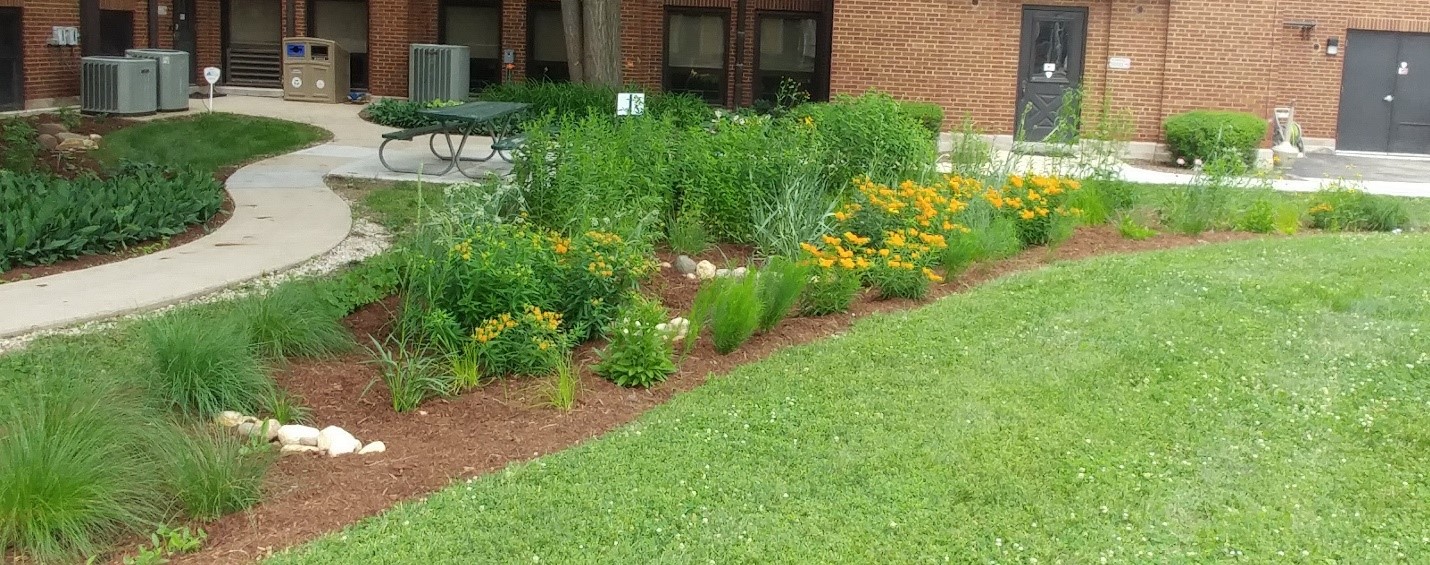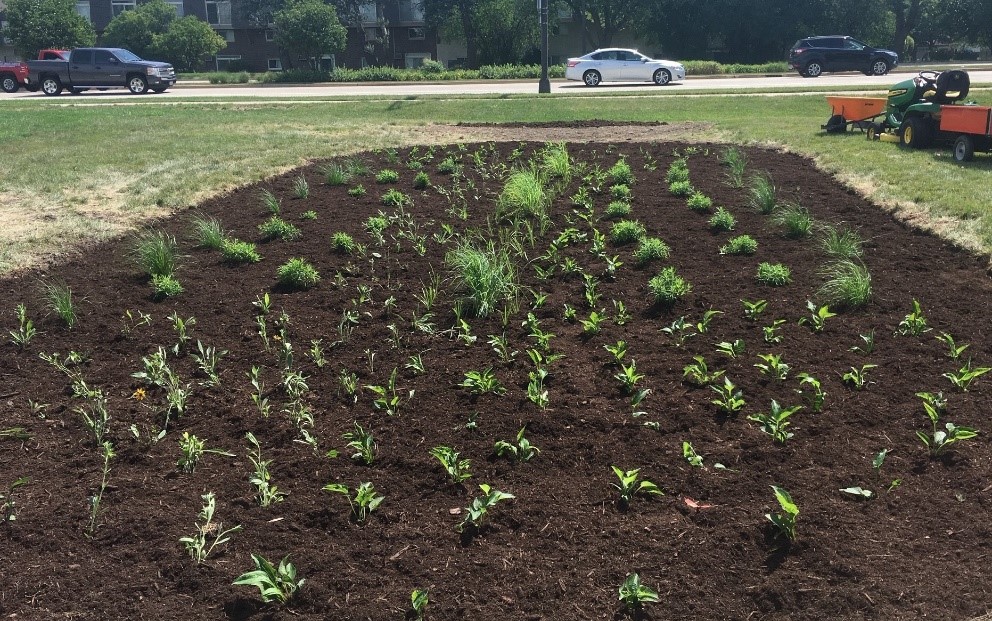Illinois was once about 60 percent covered by prairie, approximately 22 million acres, which included a majority of Kane County. Now only about 2,500 acres remains in the state. (Illinois Department of Natural Resources)
Why are our Native Plants important?
1) Pollinators
Pollinators (like bees, butterflies, moths, and others) are vital for both agriculture and ecosystem health. Along with battling pesticides, pollinators are greatly impacted by habitat loss. Native plants are crucial to re-establishing and maintaining the lost habitat that pollinators depend on for food, shelter, and reproductive strategies.
2) Wildlife Habitat
Beyond pollinators, a tremendous amount of our native wildlife rely on native habitats, whether that be prairies, wetlands, or oak savanna. By planting native plants, we are slowly restoring that habitat and finding a better balance between development and nature.
3) Flood Mitigation (Stormwater)
The deep roots of native plants breaks through compact ground, creating channels to for stormwater to infiltrate into the ground. This helps mitigate flooding by reducing the amount of overland flow, as well as replenish groundwater and filter out pollutants from stormwater that would normally flow to the Fox River. These deep native plant roots also absorb more water themselves compared to short rooted turf grass.
4) Soil Health
Similar to supporting “above ground" habitat, native plants absorb nutrients, allow deep water infiltration, and create intricate underground connections that foster healthy, “living" soils. These living soils further support biodiversity and a thriving environment.
5) Climate Change Mitigation
Native plants can assist with combating climate change. Many native plants have extremely deep-rooted systems, effectively sequestering and storing carbon.
6) Low Maintenance and Water Conservation
Native plants "built" for our environment, and therefore require minimal maintenance once established. Specifically, they are adapted to handle seasonal variability that we have in Kane County. During dry summers, established native plants' deep roots can survive without regular rain, requiring less (if any) watering – ultimately saving a tremendous amount of irrigation water.
Kane County's Native Plantings
Kane County works with organizations and communities throughout the region to restore and conserve our native prairies and ecosystems.

Government Center Pollinator Rain Garden by Building A.

Kane County Farm Bureau Pollinator Rain Garden along Randall Road.
Demonstration sites include the Kane County Government Center Rain Garden (See the GC Rain Garden brochure.) and the Kane County Farm Bureau Rain Garden (recently planted).
Other prairie restoration sites can be visited at the
Kane County Forest Preserves, Campton Township Open Spaces, and local Park Districts.
How To:
To plant a pollinator garden in your yard or on your property, please see the following resources:
Create a Wildlife Friendly Habitat:
Find more information on creating wildlife friendly habitat through The Conservation Foundation's programs:
Conservation@Home
and
Conservation@Work
Pollinator Monitoring:
To support monitoring of pollinators and native plants, participate in citizen science programs: